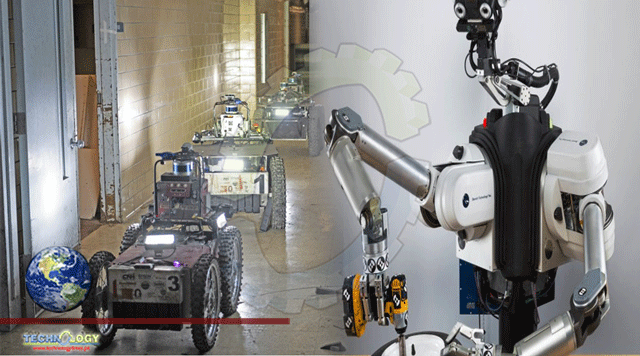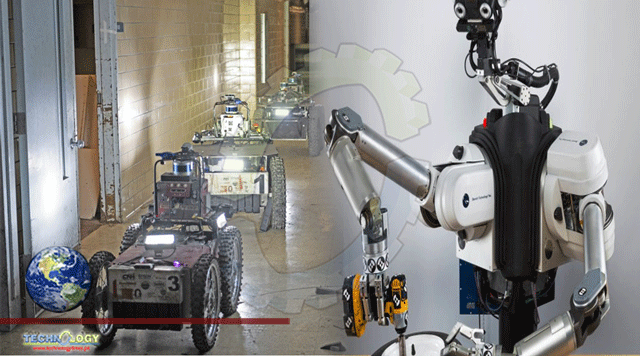A fleet of Robots from Carnegie Mellon University is headed towards Kentucky for a final check of the abilities for rescue missions
After practicing in a former limestone mine and an abandoned hospital outside of Pittsburgh, a fleet of robots from Carnegie Mellon University is headed to Kentucky for the final test of the ability to autonomously navigate an uncertain, underground course. to check its viability for rescue missions.
The challenge: Collect as many objects as possible in one hour while navigating a cave in Louisville, Ky.
The goal: Create autonomous robots to help with search and rescue missions for military and first responders.
The kicker: There’s only one operator and a fleet that could include a dozen robots, so the machines must be able to move and make decisions on their own.
It’s hard enough to make autonomous robots useful above ground. This CMU team is trying to do it in the depths below.
“At the heart of this challenge, it’s really a problem of exploration,” said Sebastian Scherer, the co-lead for CMU’s team and an associate research professor at the Robotics Institute. “You’re going into an environment that you’ve never been into, so with that comes a lot of uncertainty and the robot needs to be able to decide what do I do when I face uncertainty and prepare them for resue missions.”
Researchers and student’s work:
The researchers and students at CMU partnered with Oregon State University to create their fleet, dubbed Team Explorer.
The group is competing next week for a shot at the $2 million grand prize in the final round of the DARPA Subterranean Challenge, a competition hosted by the Defense Advanced Research Project Agency to develop autonomous tech that navigates underground scenarios.
Role of DAPRA: DARPA has hosted similar races in the past — and CMU has made a name for itself in several competitions, ranging from those focused on self-driving technology to those developing software that helps with language translation and document understanding, said Martial Hebert, the dean of the School of Computer Science.
History of Research:
In 2007, a Pittsburgh team won the DARPA Urban Challenge, a race to develop a self-driving vehicle that could move through traffic, navigate intersections, merge and park. That, in turn, led to advances in the field of self-driving car research and propelled some team members to create their own companies, including Aurora and Argo AI.
These types of challenges help researchers “discover the real problems,” Mr. Hebert said. “By having this type of challenge scenario, it pushes us to identify what is the next frontier, what is the next problem, really, that we must address.”
The DAPRA Subterranean Challenge, or SubT, is focused on autonomous robots that can navigate an underground course and be able to handle the uncertainty of an environment they haven’t seen before.
Trust in invention:
The researchers also won’t see the course before sending their machines in. To them, it’s like putting your robots in a “black hole,” said Matt Travers, another Team Explorer co-lead and a systems scientist at the Robotics Institute. There’s no GPS and no communications, he said. The teams will each have 60 minutes to navigate the course in search of roughly 40 objects, including things like fire extinguishers, ropes and a helmet with a light on it. The objects and the course will simulate what a robot might find in an underground disaster scenario, and in rescue missions as if it were sent on a search and rescue missions in a real-world application, the researchers said.
“For a lot of rescue situations, it takes a long time for people to get in,” Mr. Scherer said. “You first have to make sure that it’s safe, that there’s no gases. …The idea is that these (robots) can go in very quickly, give you a lot of awareness and then you can send people in or your other robots.”
Now helping to lead the team, Mr. Scherer also participated as a student on CMU’s team for both the DARPA Urban challenge and the Grand challenge, which focused on self-driving technology to navigate a desert landscape.
CMU’s fleet for the SubT challenge includes four small drones, three large drones, three ground robots and two walking robots.
Part of the challenge in creating their fleet was bringing all the different types of technology, Mr. Scherer said. Think of it like a human team, he suggested. Some colleagues will get along better than others and there’s bound to be some “friction” when all the co-workers come together.
Just like a team of human co-workers have strengths and weaknesses among the group, the fleet of robots is also built to cover different tasks. Some robots are better at handling stairs, for example, while others are built for squeezing through narrow spaces, Mr. Scherer said.
For now, the human operator will help the robots determine who is best suited to handle different tasks but, eventually, he hopes that decision making becomes part of the machine’s autonomous capabilities.
In designing the technology, Team Explorer also had to consider the “hierarchy of autonomy,” said Steven Willits, the lead test engineer and a research scientist at CMU.
That starts with a “local planner,” or software that helps the machine decide what to do based on its surroundings. That’s what keeps it from bumping into objects or falling off a cliff, Mr. Willits said.
Then, the team layered on more tech that creates a “global planner,” which helps the machines paint a picture of the entire environment around them and communicate with one another. That helps make sure the robots don’t cover the same ground as other fleet members.
Team Explorer:
Team Explorer is also preparing for its robots to fail. Some will get stuck, some won’t survive the course and some will take a wrong turn. The goal, Mr. Scherer said, is to make sure the robots and the fleet overall are resilient enough to recover from those failures, and prepared for future rescue missions.
“We expect these systems to get into trouble, and they’ll have to be able to get out of it themselves,” he said.
The teams have been working on their fleets for more than three years, after the competition kicked off in September 2018.
Over the course of the challenge, CMU and Oregon State have already taken home a first-place prize in the first round, which had the robots navigating a research mine in South Park Township, outside Pittsburgh. The mine is operated by the National Institute for Occupational Safety and Health.Team Explorer also scored second place in the next round of competition, a course through an abandoned nuclear power plant in Olympia, Wash.
For the final round next Thursday, Team Explorer is up against seven other groups for a prize purse that includes $2 million for the first-place winner, $1 million for the runner-up and $500,000 for the third-place team. Team Explorer includes about 20 people that are “core” members and roughly 100 that are involved in an extended team, Mr. Scherer said.
Originally published at US News

